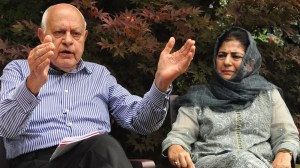Uncovering the mystery of flight
A study aimed at understanding how birds and insects manage to fly so well has found that natures best fliers share a shortcut
A hawk moth can fly fast,slow,up,down,sideways,even backward. It can hover. It can easily position itself at an open flower swaying in the breeze. Its entire life is an aerial show. Human engineers would love to make a tiny flying device,a little robot insect,if you will,with even a fraction of the flying prowess of a hawk moth,a hummingbird,a bat or a fruit fly.
Flying animals are ridiculously manoeuverable and stable in flight compared to our own small craft, says Tyson Hedrick,a biologist at the University of North Carolina.
Until now,no one fully understood how these creatureswhich evolved independently of one anothermanage to fly so well. They flap their wings,sure enough. But how do they manage such feats of airmanship?
The simple question of how creatures fly is gradually succumbing to the probing of science. A study,led by Hedrick and published last week in the journal Science,has deconstructed one basic flying manoeuvera turning motionand discovered that multiple creatures seem to employ the same principle. It may be a universal principle of animal flight,independently derived by countless species over millions of years.
The scientists call it flapping counter-torque, or FCT.
A mystery of flight is how animals keep from getting discombobulated and ankles-over-elbows as they swoosh around and interact with their environment. For example,scientists wanted to know how flying animals regain stabilityor arrest the yawafter initiating a turn.
The answer turned out to be surprisingly simple. First,the animal initiates the turn with asymmetrical flapping. Then,rather than stopping the turn with a reverse asymmetrical flapping,the animal switches to regular symmetrical flapping. At that point,natural aerodynamics kick in.
Theres a simple rule for slowing back down: Its going back to being symmetric. You dont have to try anything special, said Hedrick. What we have here is a shortcut rule for stability.
Hedrick and his colleagues universalised the principle when they noticed similarity between the flapping motions of hummingbirds and fruit flies. They studied nine types of creatures,including a hummingbird,a cockatoo,a bat and four species of insects,and all used FCT. The model also shows how animals may simultaneously specialise in both maneuverability and stability, Hedrick and his colleagues wrote.
Scientists had thought that stopping a turn in flight might require a much more elaborate physical process,and,commensurately,a lot more brainpower. Theres not a lot of acreage in a birds brain,much less a mosquitos brain,so finding out that these creatures used a shortcut made sense.
Thats the cool thing, said Mark Willis,who studies the neurobiology of animal flight at Case Western Reserve University and was not part of the Hedrick research team. We thought this was going to be really complicated. And it turns out that its not that complicated. And the animals brain doesnt have to do all this computationit comes out of the mechanics of flight,basically.
To study comparative biomechanics (how different animals do what they do),scientists shoot video at 1,000 frames per second (for a hummingbird) and 4,000 frames per second (for a fruit fly).
The research may seem esoteric,but there are civilian and military applications for small,robotic flying machines.
Imagine a disaster where you need to find out where the survivors are, said Willis. You could have a fleet of little flying machines with the same kind of sensors that our animals have. Odour detectors. Vision detectors. CO2 detectors. Something that could fly into a building and locate a hot spot of carbon dioxide; that would be an indication of someone breathing.
The military would love to have a robotic fly on the wall,he said. Why hasnt this already happened? Some people have speculated that it has,hidden in classified military programmes. But scientists say were not even close to matching the skill and manoeuverability of a hawk moth,much less a little fruit fly.
For starters,batteries are heavy. Its hard to find a source of energy that compares to insect muscle power. And the rules of aerodynamics say that small flying objects need to flap,and its challenging to make materials that have the flexibility and strength of an animal wing.
Finally,theres the computation question: The robotic craft has to be able to perceive and react to its environment. It has to avoid flying into a wall. It may need to learn how to avoid being eaten. That is why scientists want to get inside the heads of insects. The thing that everyone is trying to figure out is,what are the control algorithms that the brain is using to control this thing? Willis said.
One possibility for the engineers: Find a way to piggyback on a flying creature. The military,Willis said,would love it if they could robotically control a moth and have it fly into a window with a camera on its back.
_Joel Achenbach,LATWP






- 01
- 02
- 03
- 04
- 05

























